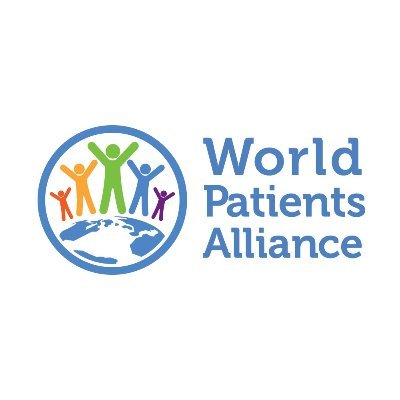"Living with diabetes is difficult. However, being a woman with diabetes is even harder due to lack of diabetes awareness and unaddressed misconceptions about diabetes," says Fatima Barakat, DiaLeb's Young Leader in Diabetes, living with type 1 diabetes mellitus (T1DM). In 2021, approximately 73 million adults were living with diabetes in the Middle East and North Africa (MENA) region, with 1 in 3 adults undiagnosed. It is estimated that 396,100 adults have diabetes in Lebanon, one of the 21 countries and territories of the MENA region (International Diabetes Federation, 2022). In 2019, there were an estimated 223 million women (aged 20-79 years) living with diabetes. By 2045, this number is expected to reach 343 million. The vast majority of hyperglycemia in pregnant women occurred in low- and middle-income countries, where access to maternal care is often scarce. Throughout this article, we will explore how diabetes affects women.
"It is difficult for me to recall the day I was diagnosed with diabetes, but I'm grateful to be alive and well," says Nurianne Arias, MSc Lecturer, Miss World 2018, living with T1DM. Diabetes is a condition in which the body's ability to produce or respond to the hormone insulin is impaired, resulting in abnormal metabolism of carbohydrates and elevated levels of glucose (sugars) in the blood and urine. Diabetes affects people of all ages, races, genders, and lifestyles.
If you're a woman living with diabetes, your risk of developing heart disease (the most frequent diabetes complication) is four times higher than in men. Moreover, other diabetes-related problems, such as blindness, kidney disease, and depression, are more common in women and they occur mostly when diabetes is poorly controlled (Centers for Disease Control and Prevention, 2019). As a woman, you’re subject to experiencing some of the similar symptoms of diabetes as men, such as increased thirst and hunger, fatigue, blurry vision, and frequent urination. However, some symptoms are unique to women, including vaginal and oral yeast infections, vaginal thrush, urinary infections, female sexual dysfunction and polycystic ovary syndrome (PCOS) (Table 1).
Table 1. Gender differences in symptoms and complications of diabetes mellitus
At all stages of life, women’s bodies present challenges to managing diabetes due to the fluctuating hormones associated with birth control pills, menstrual cycle, childbirth, and menopause. Luckily, there are steps you can take to prevent or delay diabetes, reduce complications and control symptoms, such as maintaining a healthy lifestyle by exercising, following a balanced diet, quitting smoking, limiting alcohol consumption, as well as regularly testing blood glucose levels.
Diabetes and Pregnancy
Some women develop diabetes for the first time when they become pregnant. Diabetes mellitus during pregnancy is referred to as gestational diabetes mellitus (GDM). 1 in 7 live births in the MENA region is affected by GDM, which often goes away after your baby is born. However, almost half of women with a history of GDM may develop type 2 diabetes within five to ten years following delivery (International Diabetes Federation, 2019). Before you get pregnant, you may be able to prevent gestational diabetes by losing weight if you’re overweight and by being physically active (Centers for Disease Control and Prevention, 2019). GDM is a serious and neglected threat to maternal and child health. Many women with GDM experience pregnancy-related problems, including high blood pressure, large birth weight babies, obstructed labor and increased risk of miscarriage (National Institute of Diabetes and Digestive and Kidney Diseases, 2019). To reduce the risk of unfavorable pregnancy outcomes, you should carefully control and monitor your blood glucose levels with the help of your healthcare professional (International Diabetes Federation, 2019).
Having diabetes entails taking specific measures and committing to a diabetes management plan, regardless of gender and type of diabetes. “When my parents first learned I had diabetes, they were unhappy, but they knew I could handle it, and after 12 years, I am proud of myself and how I dealt with the disease,” shares Myriam Mikhael, PhD Researcher, DiaLeb's Advocacy Ambassador, living with T1DM. To maintain a good quality of life and meet treatment goals, it is necessary to consult with a multidisciplinary team that provides psychological support as well as effective diabetes management.
You can hear more about the patient perspective from empowering ladies from across the world during DiaLeb's 4thAnnual Women and Diabetes Panel.
If you are in need of support, contact us to join our type 1 diabetes network.
References
Centers for Disease Control and Prevention. (2018). Diabetes and Women. Retrieved from: https://www.cdc.gov/diabetes/library/features/diabetes-and-women.html
Centers for Disease Control and Prevention. (2019). Gestational Diabetes. Retrieved from: https://www.cdc.gov/diabetes/basics/gestational.html
Food and Drug Administration. (2021). Women and Diabetes. Retrieved from: https://www.fda.gov/consumers/womens-health-topics/women-and-diabetes
International Diabetes Federation. (2019). Gestational Diabetes. Retrieved from: https://www.idf.org/our-activities/care-prevention/gdm
International Diabetes Federation. (2021). IDF Diabetes Atlas. Retrieved from: https://diabetesatlas.org/
International Diabetes Federation. (2022). IDF MENA Members. Retrieved from: https://idf.org/our-network/regions-members/middle-east-and-north-africa/members/39-lebanon.html
National Institute of Diabetes and Digestive and Kidney Diseases. (2019). What is Diabetes? Retrieved from: https://www.niddk.nih.gov/health-information/diabetes/overview/what-is-diabetes#problems




